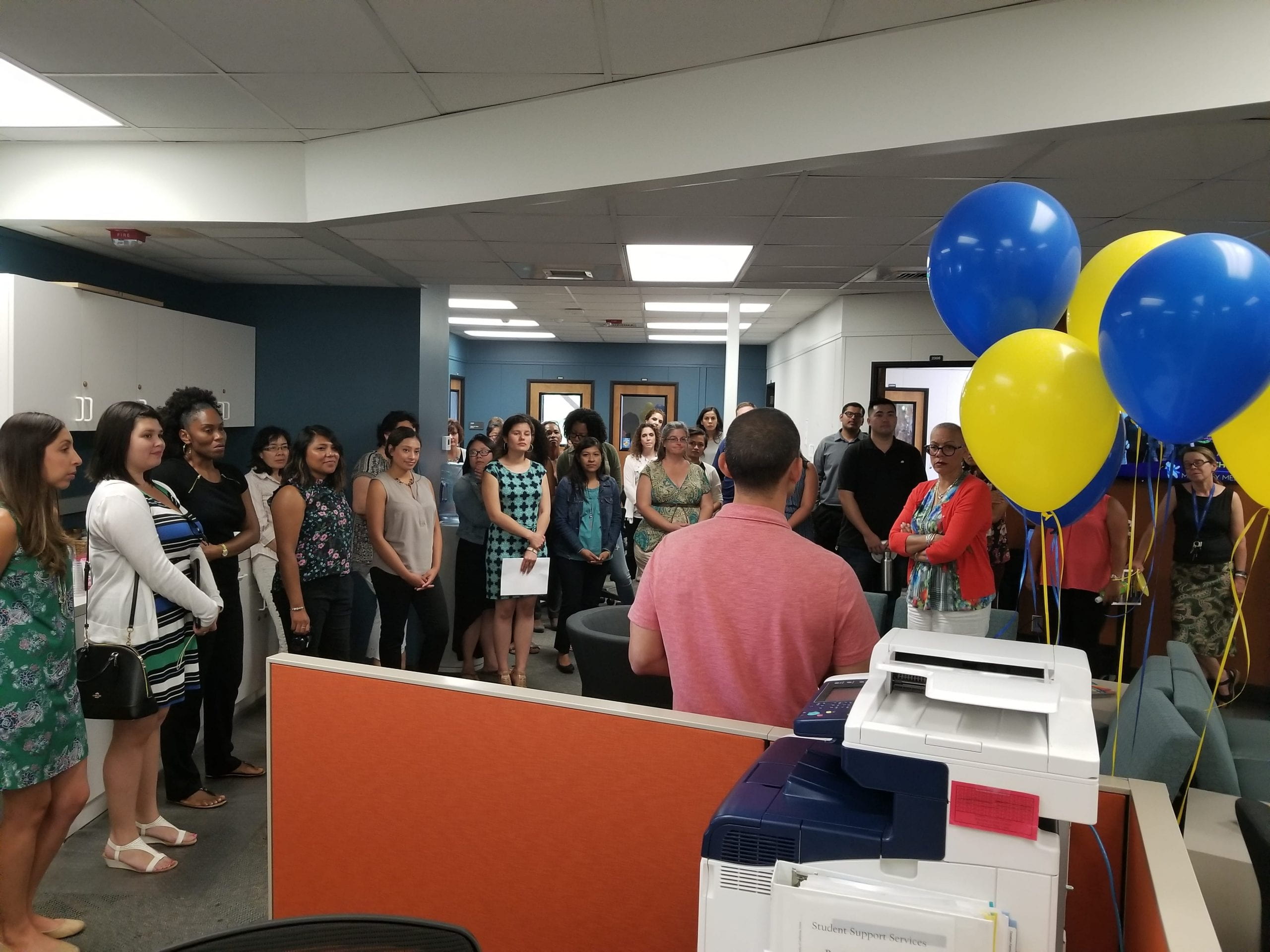Have you heard the news? The Division of Undergraduate Education has launched the new Student Success Initiative (SSI). This is a program meant to make big changes for the better in a dynamic campus environment – making an impact for disadvantaged student populations.
With over 25,000 students, UC Irvine must take into account the changing demographics and needs of the campus. But when a new program has the potential to do exciting things, gaining visibility above the noise can be extremely challenging.
UCI has recently earned significant national recognition for its support of low-income and first-generation students. That’s why we’re here to talk about the Student Success Initiatives (SSI) – making an impact for disadvantaged student populations.
SSI plays a large role in the university’s continued commitment to serving these student communities. Student Success Initiatives focuses its efforts on serving first-generation, low-income, and transfer students.
To help students on their way to graduation, smaller programs were established with specific focuses. Some of these groups include incoming first-year students; financially at-risk students; STEM transfer students; student parents; and students with varying abilities, among others.
Student Success Initiatives is a merger of the Student Support Services and the Transfer Student Center. The new SSI innovatively combines pre-existing programs with brand new ones. Ultimately, the SSI hopes to maximize staff capabilities, efficiency, and the support they provide to students.
“We are thrilled to launch this reimagined unit, Student Success Initiatives as a part of the DUE portfolio,” said Michael Dennin, Dean of Undergraduate Education at UCI. “This unit is critical in helping students define their own unique paths to success. The challenge can be letting them know that it is available.”
This merger eliminated the need for two separate spaces, so the DUE has created a centralized location for the entire professional and student staff. The newly renovated SSI space includes technology upgrades with more computer terminals, computers that run faster, tutoring space, flex space for a class of 30, an upgraded and bigger tutoring space, and student staff work stations.
Kevin Huie, Director of SSI, and his team aren’t worried about the crazy changes to come, and neither should you because they have a gameplan to successful communication. Find out how in these a four steps to spread awareness and gain visibility.
Defining student success:
Leaders such as Kevin Huie must ground any changes they hope to achieve in a clear ‘end picture,’ or an idea of what the university is striving for.
One of the core concepts that Huie instills as the Director of SSI is that a student’s success is dependent on one’s own self-worth. Huie also stresses that each student’s definition of success may vary. Student Success Initiatives is designed to help each student define their academic goals. After that, SSI connects the student with resources that will empower them through their academic journey.
Huie takes into account student success metrics such as a student’s GPA, matriculation from one year to the next, and time to degree. This data is gathered to determine intended outcomes and roadmap student participant success.
Following that roadmap consists of many ‘small steps’ which SSI staff work through closely with students. These small steps could include passing a tough class, developing confidence, or building effective study skills. The SSI hopes to provide students with valuable skill-sets which will ultimately help on their path to graduation.
Carving a path:
Drawing a personal roadmap for student success calls for SSI staff and leadership to bring smaller initiatives together into a bigger, overarching vision.
“We are trying to help create an individual roadmap for each student to help them maximize their strengths. Specifically, we want them to create their own roadmap with our assistance,” says Vickie Basolo, professor and the Associate Dean of the Division of Undergraduate Education Planning, Policy, and Design.
“We need to be experts of what the campus offers and we need to get to know the students, establish relationships and help inform them about the opportunities that will be right for them.”
“Not only do we need to have people know what we are doing, but we need to know what everyone else is doing. We want to be that starting point.”
Establishing goals and measurements:
Good leadership makes sure to check the roadmap along the way. To measure their progress, leaders need to establish a clear, specific set of metrics and then collect data on them consistently. Metrics serve to measure the overarching vision.
All this information week to week or quarter to quarter helps SSI to see the big picture. For example, Huie and his team track matriculation very closely. They look at whether each student progresses from their first year to their second year. As previously mentioned, graduation rates are key.
A lot of the metrics taken show evidence of the considerable impact SSI programs and services may have on student success. SSI attributes these changes to working with students on their various academic skills.
Workshops, coaching, and teaching by the SSI staff all serve to build student skills such as test-taking, note-taking, and time management. The impact of these new skill-sets is then measured by following up after a training session to see if the students are implementing what they learned.
Communicate and celebrate:
“Communicating to students what they can expect from each program and service is critical,” says Kevin Huie.
“Sharing our small successes is critical.”
In order to stand out on a decentralized campus, programs must communicate across all levels of the institution.
“We need to be vigilant in putting the pieces together and figure out how our initiatives complement one another.”
Interdepartmental communication is meant to reinforce the vision, the path, and the outcomes students will achieve.
The SSI space can be found at 2200 Student Services II, so swing by to make use of these resources. Visit the SSI website to find out where we’re located, and more about the services offered.

